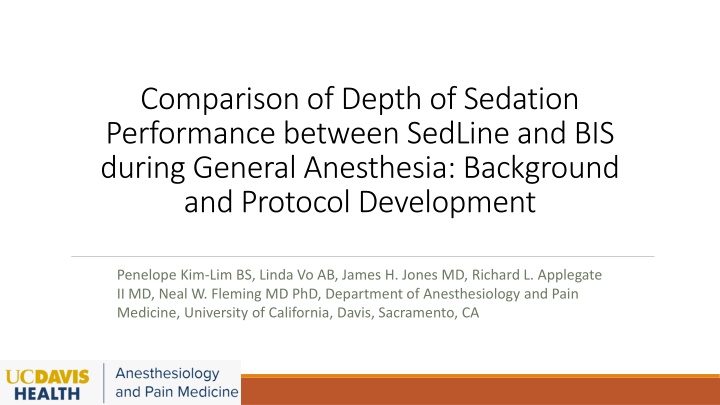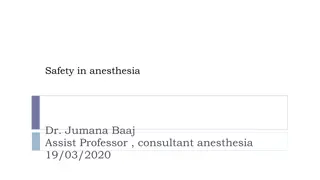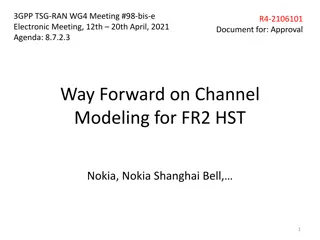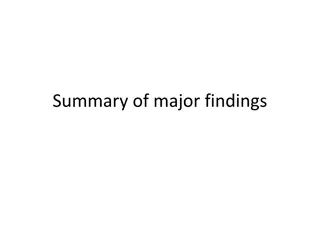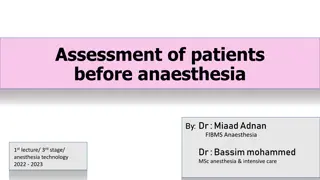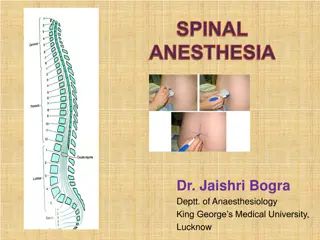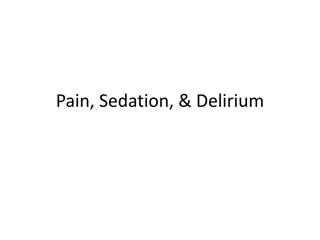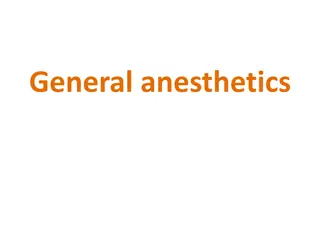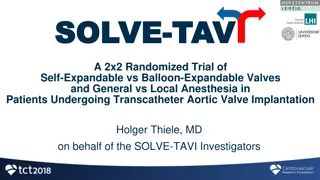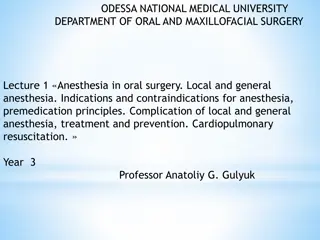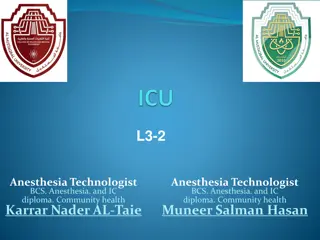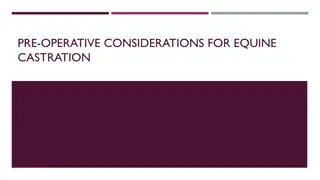Comparison of SedLine and BIS Depth of Sedation Performance in General Anesthesia
This study evaluates the performance of SedLine and BIS monitoring devices in measuring anesthetic depth during general anesthesia. The research protocol aims to compare processed EEG indices from both monitors across various levels of anesthetic depth using a custom interface box. Inclusion criteria include patients aged 18 and older with ASA status I-III, scheduled for procedures requiring general anesthesia. Preliminary results are being discussed, emphasizing the potential concordance between EEG indices and clinical assessments of anesthetic depth.
Download Presentation

Please find below an Image/Link to download the presentation.
The content on the website is provided AS IS for your information and personal use only. It may not be sold, licensed, or shared on other websites without obtaining consent from the author.If you encounter any issues during the download, it is possible that the publisher has removed the file from their server.
You are allowed to download the files provided on this website for personal or commercial use, subject to the condition that they are used lawfully. All files are the property of their respective owners.
The content on the website is provided AS IS for your information and personal use only. It may not be sold, licensed, or shared on other websites without obtaining consent from the author.
E N D
Presentation Transcript
Comparison of Depth of Sedation Performance between SedLineand BIS during General Anesthesia: Background and Protocol Development Penelope Kim-Lim BS, Linda Vo AB, James H. Jones MD, Richard L. Applegate II MD, Neal W. Fleming MD PhD, Department of Anesthesiology and Pain Medicine, University of California, Davis, Sacramento, CA
Background The ideal end-tidal concentration of anesthetic dose for a patient under general anesthesia is dynamic and depends on factors. At present, no individual brain function monitoring device has been shown to be substantially superior. Prior studies have attempted to compare the performance of these devices, but a lack of space and common placement locations compromises interpretation. The aim of this protocol is to examine the concordance between processed EEG indices (BIS and PSI) and anesthesia provider assessments across a range of anesthetic depths using a custom engineered interface box.
Hypothesis We hypothesized that processed EEG indices from BIS and PSI (SedLine) monitors can be measured simultaneously using individual electrode placement and a custom designed interface box to combine and split signals, thus allowing performance to be compared across a broad range of anesthetic depths. This data collection system allows us to investigate the concordance between these monitors and real-time clinical assessments of anesthetic depth.
Study Design Data collection system: prospective, non-randomized, non-blinded trial Individual and uniquely-designed interface box that allow simultaneous collection of both monitoring indices at once
Inclusion Criteria Patients aged 18 years or older American Society of Anesthesiologists (ASA) status I-III English-speaking Scheduled for surgical or non-surgical procedures requiring general anesthesia
Exclusion Criteria Any deformities or devices that may prevent application of EEG sensors to the patient s forehead Developmental delay Other conditions for which the patient is otherwise deemed not suitable for the study at the discretion of the investigator
Discussion We present a novel data collection system that will support a prospective, non-blinded, non-randomized study to concurrently compare the performance of processed EEG indices from BIS and SedLine monitors using a standardized protocol and node placement. In addition, our inclusion of standardized clinical observations in real-time and collection of raw and processed EEG waveforms will allow us to investigate the agreement of BIS and PSI indices across a wide range of anesthetic depths and establish correlations to clinical assessments. Real-time, simultaneous comparison of brain function monitoring devices using this electronic interface is the only way by which we can confidently and accurately investigate differences in proprietary algorithms.
Future Directions Overall, BIS and PSI indices appear to change in parallel during general anesthesia induction for our first 5 patients. This study is currently in the recruitment phase. Earlier publication of our study design was delayed so that the electrode sensors, custom-built passive interface box, and data collection system could be appropriately evaluated in clinical practice. Further research with our design will be necessary given the potential benefits of accurately assessing anesthetic depth. This protocol will further improve the body of literature that exists on concordance of PSI and BIS with a custom engineered and standardized node array for accurate interpretation.
Acknowledgements Masimo, Inc provided support for the construction and assembly of the data collection hardware and software of this study.
